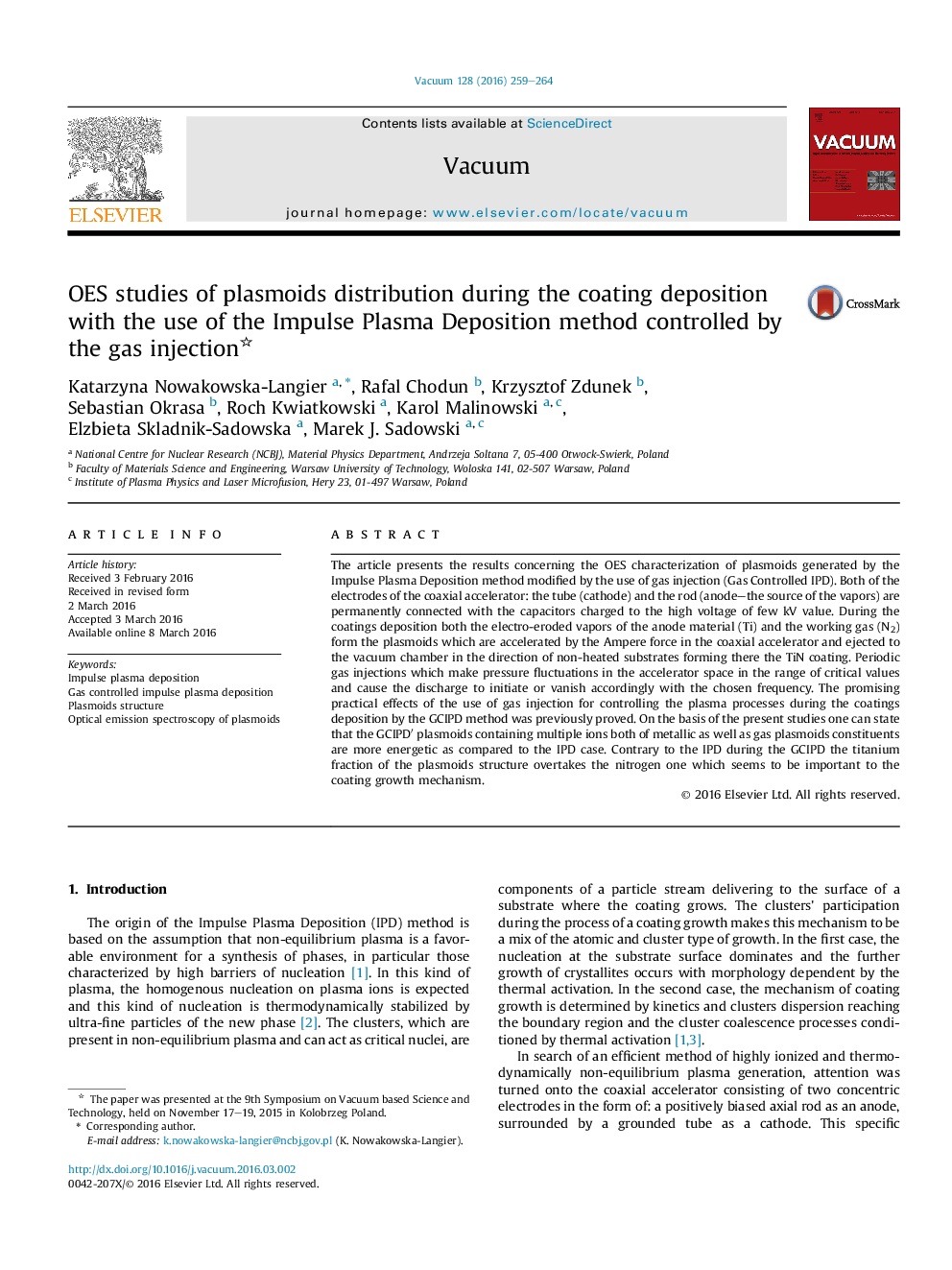| Article ID | Journal | Published Year | Pages | File Type |
|---|---|---|---|---|
| 1689152 | Vacuum | 2016 | 6 Pages |
•Impulse Plasma Deposition method controlled by the gas injection–Gas Controlled IPD.•Mechanism of plasmoids distribution during Gas Controlled Impulse Plasma Deposition.•OES characterization of plasmoids generated and distributed in condition of GC IPD.•Time structure of plasmoids during GCIPD.
The article presents the results concerning the OES characterization of plasmoids generated by the Impulse Plasma Deposition method modified by the use of gas injection (Gas Controlled IPD). Both of the electrodes of the coaxial accelerator: the tube (cathode) and the rod (anode–the source of the vapors) are permanently connected with the capacitors charged to the high voltage of few kV value. During the coatings deposition both the electro-eroded vapors of the anode material (Ti) and the working gas (N2) form the plasmoids which are accelerated by the Ampere force in the coaxial accelerator and ejected to the vacuum chamber in the direction of non-heated substrates forming there the TiN coating. Periodic gas injections which make pressure fluctuations in the accelerator space in the range of critical values and cause the discharge to initiate or vanish accordingly with the chosen frequency. The promising practical effects of the use of gas injection for controlling the plasma processes during the coatings deposition by the GCIPD method was previously proved. On the basis of the present studies one can state that the GCIPD′ plasmoids containing multiple ions both of metallic as well as gas plasmoids constituents are more energetic as compared to the IPD case. Contrary to the IPD during the GCIPD the titanium fraction of the plasmoids structure overtakes the nitrogen one which seems to be important to the coating growth mechanism.
